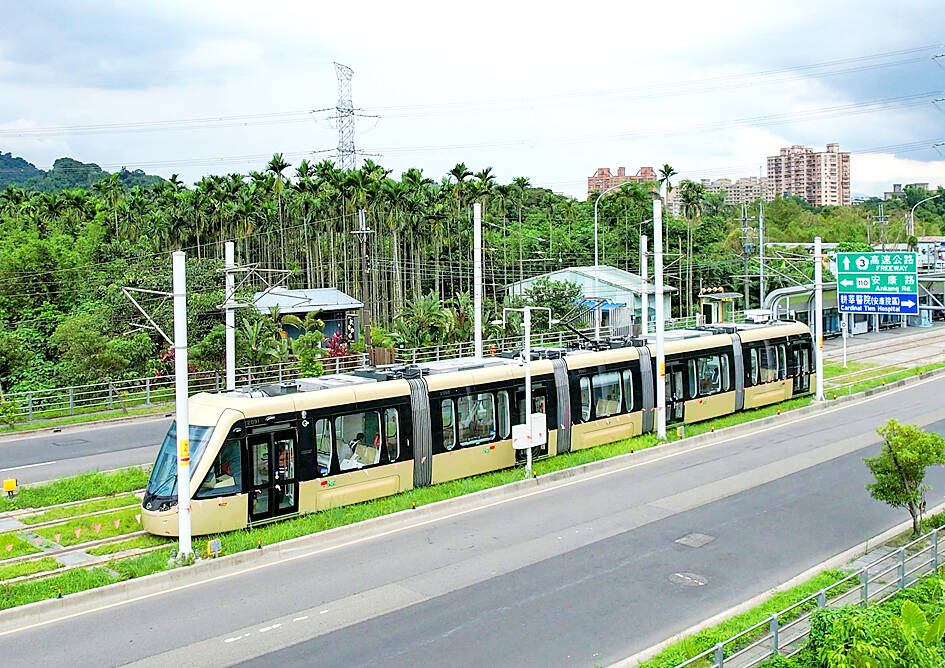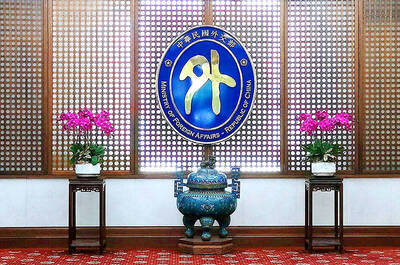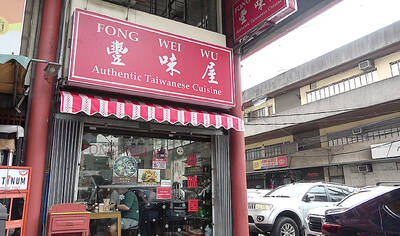Residents in New Taipei City’s Ankeng District (安坑) said the local light rail system might have a positive influence, but raised questions about its practicality.
The Ankeng light rail system, which is to commence operations after the Lunar New Year holiday, would cut travel time for commuters from Ankeng to downtown Taipei or New Taipei City by 15 to 20 minutes, the city government said.
According to the initial plan, there would be one train every 15 minutes during peak time and additional interval trains would run between the densely populated Ankang Station (安康) and Shisizhang Station (十 四張).

Photo courtesy of the New Taipei City
To encourage people to take the light rail system, the city’s Transportation Department arranged shuttle buses, set up more YouBike 2.0 rental stations and increased parking spaces for vehicles and motorbikes along the light rail.
“People living in Ankeng have been waiting for the infrastructure for nearly 30 years,”AmKhenn Culture Studio chief executive officer Wu Bo-wei (吳柏瑋) said.
However, the stations along the light rail system are far away from densely populated areas and attractions, he said, citing the example that it takes 10 minutes to walk from Sunshine Sports Park Station (陽光運動公園站) to the park.
Many communities along the line from Shuangcheng Station (雙城站) to Jinwen University of Science and Technology Station (景文科大站) are on hillsides, which makes commuting on the light rail difficult, he said.
People can take the line to Shisizhang Station, which is also on the Taipei MRT Circular Line, but would have to transfer at Dapinglin Station (大坪林站) before entering Taipei, he said.
A resident living near New Taipei City’s Rose China Town, a hillside community, said it takes 10 to 20 minutes of walking uphill from Rose China Town Station (玫瑰中國城站) to the community, adding that riding a motorbike would be more convenient than taking a shuttle bus.
Ankeng Borough Warden Lin Yung-huei (林永輝) said that people are unlikely to take the light rail system to commute from home to Taipei, as it takes too long.
Elderly people or those who are not in a hurry are more likely to take the system, he said, adding that setting up more stops for the shuttle bus could encourage the elderly to go out.
People commuting to New Taipei City’s Jhonghe (中和), Yonghe (永和), Banciao (板橋) and Sinjhuang (新莊) districts are more likely to take the light rail system, as there tends to be traffic congestion in those areas, Sindian Borough Warden Yu Yen-lan (游炎嵐) said.
A student surnamed Lin (林), who lives near Jinwen University of Science and Technology, said that going to the light rail station is more inconvenient than taking a bus outside the school gate.
Three other students who usually commute by motorbike said that they would not consider taking the light rail system.
A resident surnamed Lee (李), who has poliovirus, said that the light rail system is safer for him compared with buses.
New Taipei City Councilor Chen Yi-chun (陳儀君) of the Chinese Nationalist Party (KMT) said the light rail system provides a new option for people, adding that she believed people would be more willing to take it after shuttle buses and YouBike stations have been installed.
As housing prices in Ankeng are lower than in Sindian, more people might move there and help the area’s development, she added.
Many new houses have been built in Ankeng and the transaction volume has grown significantly, Sinyi Realty Inc branch manager Chueh Chien-cheng (闕建丞) said, adding that the overall housing prices in the area have increased by about 30 percent.
New housing prices rose from about NT$350,000 to NT$500,000 per ping around Ankang Station from 2017 to last year, he said.
New Taipei City Councilor Chen Nai-yu (陳乃瑜) of the Democratic Progressive Party said that tourism could expand in the area.
The Jing-Mei White Terror Memorial Park (白色恐怖景美紀念園區), Sindian Prison (新店監獄) and Ankeng Execution Ground (安坑刑場) are along the light rail line, providing good material for people to learn about the history of the White Terror era, she said.

The Ministry of Foreign Affairs (MOFA) yesterday voiced dissatisfaction with the Comprehensive and Progressive Agreement for Trans- Pacific Partnership (CPTPP), whose latest meeting, concluded earlier the same day, appeared not to address the country’s application. In a statement, MOFA said the CPTPP commission had "once again failed to fairly process Taiwan’s application," attributing the inaction to the bloc’s "succumbing to political pressure," without elaborating. Taiwan submitted its CPTPP application under the name "Separate Customs Territory of Taiwan, Penghu, Kinmen and Matsu" on Sept. 22, 2021 -- less than a week after China

THE GOOD WORD: More than 100 colleges on both sides of the Pacific will work together to bring students to Taiwan so they can learn Mandarin where it is spoken A total of 102 universities from Taiwan and the US are collaborating in a push to promote Taiwan as the first-choice place to learn Mandarin, with seven Mandarin learning centers stood up in the US to train and support teachers, the Foundation for International Cooperation in Higher Education of Taiwan (FICHET) said. At the annual convention of the American Council on the Teaching of Foreign Languages held over the weekend in New Orleans, Louisiana, a Taiwan Pavilion was jointly run by 17 representative teams from the FICHET, the Overseas Community Affairs Council, the Steering Committee for the Test of Proficiency-Huayu, the

A home-style restaurant opened by a Taiwanese woman in Quezon City in Metro Manila has been featured in the first-ever Michelin Guide honoring exceptional restaurants in the Philippines. The restaurant, Fong Wei Wu (豐味屋), was one of 74 eateries to receive a “Michelin Selected” honor in the guide, while one restaurant received two Michelin stars, eight received one star and 25 were awarded a “Bib Gourmand.” The guide, which was limited to restaurants in Metro Manila and Cebu, was published on Oct. 30. In an interview, Feng Wei Wu’s owner and chef, Linda, said that as a restaurateur in her 60s, receiving an

MORE RETALIATION: China would adopt a long-term pressure strategy to prevent other countries or future prime ministers following in Sanae Takaichi’s steps, an academic said Taiwan should maintain communications with Japan, as Japanese Prime Minister Sanae Takaichi is to lead a revision of security documents, Taiwanese academics said yesterday. Tensions have risen between Japan and China over remarks by Takaichi earlier this month that the use of force against Taiwan would constitute a “survival-threatening situation” for Japan. Prospect Foundation president Lai I-chung (賴怡忠) yesterday said Takaichi’s stance regarding Taiwan is the same as past Japanese prime ministers, but her position is clearer than that of her predecessors Fumio Kishida and Shigeru Ishiba. Although Japan views a “Taiwan contingency” as a “survival-threatening situation,” which would allow its military to